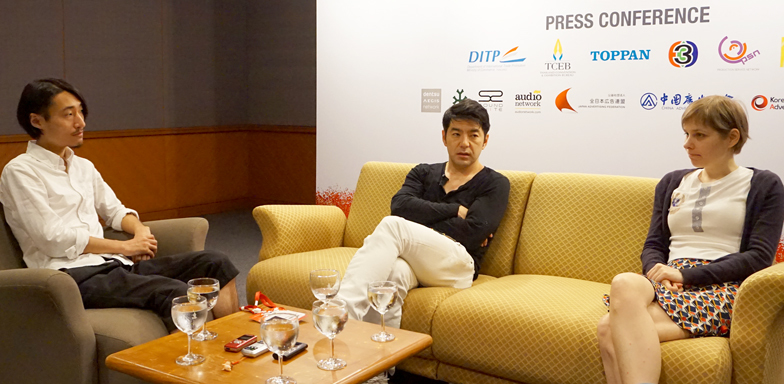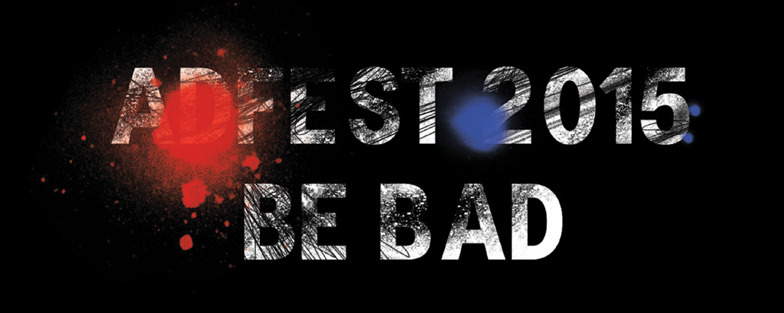Works that balanced technology and storytelling were highly regarded
——I hear there were over 400 entries in this year's AdFest Interactive category. First, could you share the trends observed in this year's Interactive and Mobile categories?
Naja: Compared to last year or the year before, I didn't get the impression there were any single works that completely overturned established concepts or created entirely new trends. As was also the case in the Cyber category at Cannes, the interactive field recently experienced a huge surge in technology, followed by a swing back toward story. Now, both trends coexist. This time, there were good works in both areas, and among them, works that balanced both elements well were particularly valued.
Also, the pieces I found most interesting were actually almost all leveraging social media. Personally, I didn't think social was a subcategory with that much potential for breakthrough, so the outstanding ideas there were surprising.
Miura: I think the interactive entries weren't just numerous, but also high in quality. Two points particularly caught my interest. One was how the theme centered on "creating something truly crafted within social media." Previously, social media had a somewhat lightweight image, and projects encouraging public submissions often struggled to connect with craftsmanship. This time, however, it was fascinating to see multiple works where craft and social elements merged—like a child's wonderful drawing transforming into animation, or a casual tweet taking on a novel visual form through new printing technology.
The other was the opportunity to discuss works that could be called "prototypes for the future." Pieces that pointed to our near-future work or that made you think they would surely change games were particularly memorable. It sparked debate because it's hard to draw the line between whether they were genuinely aiming for that or if they were just prototypes for PR.
—You mean, whether they're just trying to generate buzz?
Miura: Yes, there were many genuinely experimental pieces. Some argued it was problematic to put essential works and buzz-generating pieces on the same table.
Naja: Even if it's PR-driven, sometimes it succeeds as PR. But we hadn't really had discussions about what that means for this category before, so it was striking.
————For advertising awards, the secretariat has long emphasized the need to "clearly define what constitutes a scam (*)" and explored various approaches. Hearing this now, it seems surprisingly difficult to pinpoint the boundary between prototypes and scams. On the other hand, prototypes are often encouraged, so the question arises: should we simply dismiss them?
Miura: I think the reason this sparked such discussion is that, compared to other categories, interactive and mobile hold a larger stake in the future of the advertising industry. The fact we could have this conversation itself felt valuable as a perspective worth posing to the world.
From Screen to Action: The Convergence of Digital and Analog
—So Ray, what were your overall impressions?
Ray: Two things stood out to me. First, this year likely marks the first year where digital and analog truly merged. Previously, especially in interactive and mobile, most projects were confined to the screen. But in this year's judging, works that didn't stop at the screen, but sought to connect the screen with the real world, were prominent. We're seeing possibilities beyond "screen = monitor display"—like an entire room becoming a screen. I think this clearly shows the past year or two have been a turning point.
——Why do you think this trend emerged this year?
Ray: The underlying factor is technological progress. Advancements have made technology more accessible and universal, enabling it to meet people's needs. Also, it's become possible to create interactive projects on a much larger scale. Another striking point during judging was the emphasis on "going beyond advertising." In Japanese, "advertising" literally means "broadly informing." But when selecting the Grand Prix, I questioned, "So what happens after the announcement?" I looked at the difference between projects that were simply programs or campaigns and those that showed potential for broader impact.
There were truly excellent pieces that ended as ads, and I liked those too. But this time, we valued work that didn't stop at announcement, but had the potential to expand and ultimately drive action. I think we'll be deeply questioning how campaigns contribute to society going forward.
——Unfortunately, the Mobile category didn't have any Grand Prix or Gold winners. Especially in Asia, where mobile usage numbers are quite high, why was there no breakthrough?
Ray: I had high hopes too. Perhaps advertisers still rarely request "something interesting just for mobile."
Miura: After judging, we discussed this too. In Japan, advertisers still struggle to justify investing in mobile. Conversely, creators aren't providing the perspective or creative work to drive that investment.
Ray: A few years ago, AdFest and various ad awards separated mobile into its own category, treating it as distinct from interactive. But now, mobile's position has changed; we can't think of mobile and other categories in isolation anymore. In fact, after judging, we discussed whether it might be better to merge mobile and interactive now. There's also the concern that further fragmentation might not benefit the industry. How we define and approach mobile will likely be a key challenge moving forward.
——It seems the award framework itself needs to be flexible and adapt to the changing landscape.
(Continued in Part 2)
*Note: Scam refers to the general practice of submitting entries to advertising awards without actual campaign performance and without the advertiser's consent, with the sole aim of winning an award.








